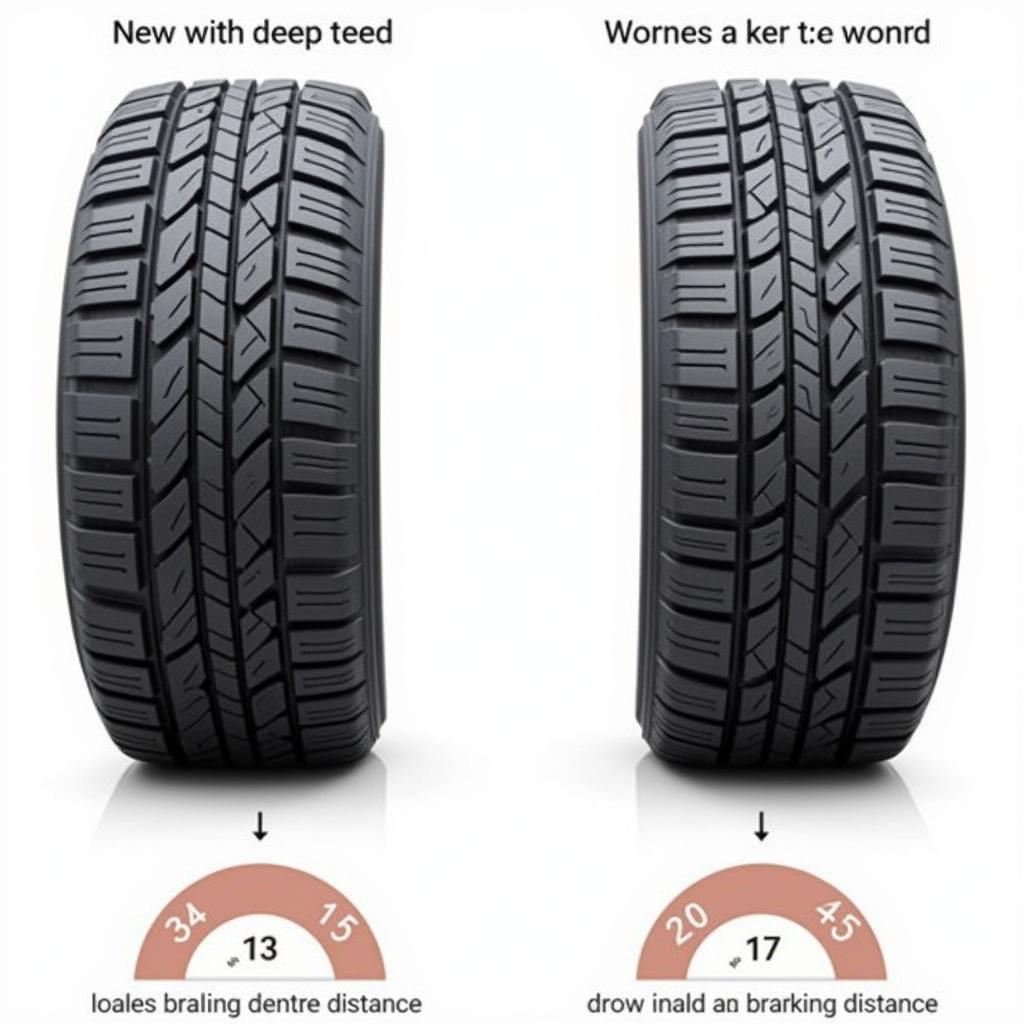The braking distance of a car, represented by the equation d = 0.018268 * v₀², is a crucial factor in road safety. This formula helps us understand the relationship between a car’s initial speed (v₀) and the distance it takes to come to a complete stop (d). Let’s delve into the factors affecting braking distance and how this equation plays a vital role in understanding and improving automotive safety.
Decoding the Braking Distance Formula: d = 0.018268 * v₀²
The formula d = 0.018268 * v₀² is derived from principles of physics, specifically the work-energy theorem. It considers the kinetic energy of the vehicle and the work done by the brakes to dissipate that energy. The constant 0.018268 accounts for factors like friction between the tires and the road surface, assuming average conditions. This formula provides a simplified model, and real-world braking distances can vary due to factors discussed later in this article.
What Does v₀ Represent in the Braking Distance Equation?
v₀ represents the initial velocity, or speed, of the car in meters per second (m/s). It’s the speed at the moment the brakes are applied. Understanding this is crucial because even small increases in initial speed can significantly increase braking distance.
How Does Initial Velocity Affect Braking Distance?
Since the initial velocity is squared in the equation, its impact on braking distance is exponential. Doubling the initial speed quadruples the braking distance. This highlights the importance of maintaining safe speeds, especially in adverse weather or traffic conditions.
Factors Influencing Real-World Braking Distance: Beyond d = 0.018268 * v₀²
While the formula provides a valuable estimate, several real-world factors can influence braking distance. These include tire condition, road surface, weather conditions (rain, snow, ice), brake system performance, and the driver’s reaction time.
The Role of Tires in Braking Distance
Tires are the only contact point between the car and the road. Their condition, including tread depth and pressure, directly impacts grip and thus braking distance. Worn tires significantly reduce traction, increasing the stopping distance.
 Tire Condition and Braking Distance
Tire Condition and Braking Distance
How Weather Impacts the Braking Distance Equation
Adverse weather conditions such as rain, snow, or ice drastically reduce road surface friction. This reduces the effectiveness of the brakes and leads to longer stopping distances. In such conditions, it’s crucial to reduce speed and maintain a greater following distance.
“Maintaining your vehicle’s brakes and tires is paramount for safety,” says Robert Johnson, a seasoned automotive engineer with over 20 years of experience. “Regular inspections and timely replacements can significantly reduce your braking distance and prevent accidents.”
Calculating Braking Distance: Practical Examples Using d = 0.018268 * v₀²
Let’s consider some examples to illustrate the formula. If a car is traveling at 20 m/s (approximately 45 mph), its braking distance would be d = 0.018268 (20)² = 7.3 meters. If the speed doubles to 40 m/s (approximately 90 mph), the braking distance increases to d = 0.018268 (40)² = 29.2 meters.
 Braking Distance Comparison at Different Speeds
Braking Distance Comparison at Different Speeds
“Remember, the braking distance equation doesn’t account for driver reaction time,” adds Maria Sanchez, a certified driving instructor with over 15 years of experience. “This adds a crucial additional distance to the total stopping distance.”
Conclusion: The Importance of Understanding the Braking Distance of a Car: d = 0.018268 * v₀²
Understanding the factors influencing braking distance, particularly the relationship between initial speed and stopping distance represented by the equation d = 0.018268 * v₀², is crucial for safe driving. By maintaining your vehicle, adapting to weather conditions, and respecting speed limits, you can significantly reduce your stopping distance and contribute to safer roads for everyone. For any further assistance or automotive advice, feel free to connect with us at AutoTipPro. Call us at +1 (641) 206-8880 or visit our office at 500 N St Mary’s St, San Antonio, TX 78205, United States.





Leave a Reply